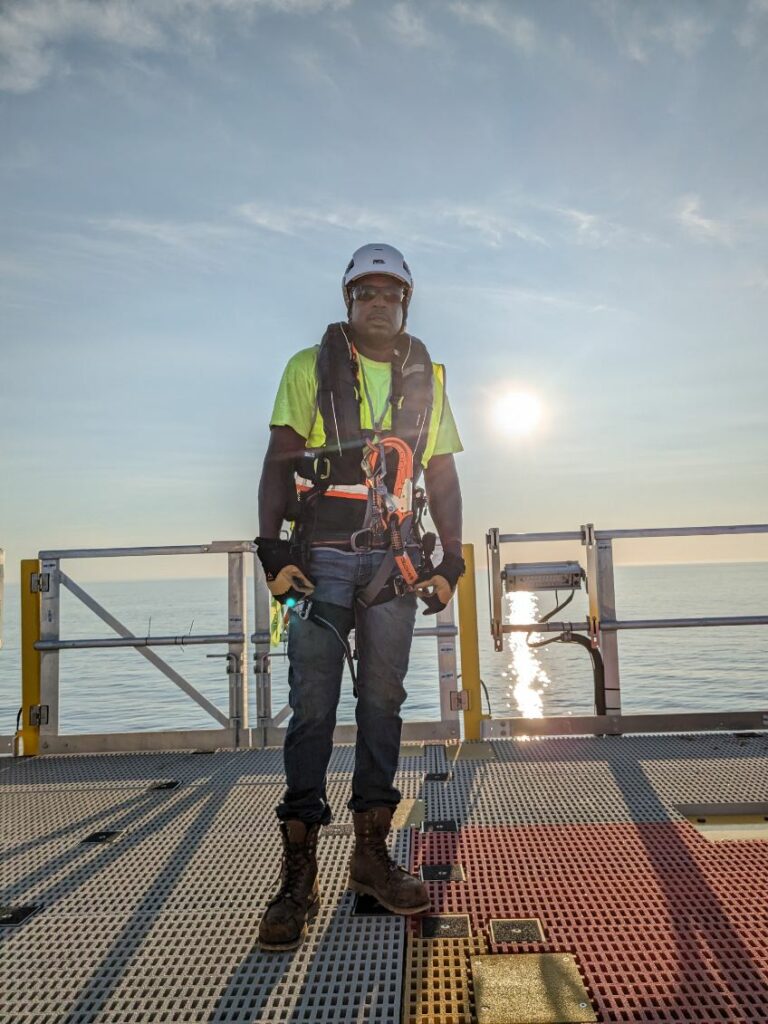Oronde lives in Massachusetts and has been a member of Ironworkers Local 37 for nine years. He’s a technician and currently working on Vineyard Wind 1 and previously worked on Block Island Wind Farm.
What is it like working on offshore wind farms?
It’s awesome. We’re in open ocean—about 20 miles off the southern coast of Martha’s Vineyard. I can’t see land in any direction. There’s no one out there besides us and the seagulls. We’re out there putting the bolts in holes and standing these [turbines] up. We, the maintenance crew, go in with a punch list of small jobs that need to get done around the specific turbine—say if there are bolts that need to be turned around in the opposite direction. We move on to the next turbine when we’re done. By the time it’s all said and done, there’s going to be a cluster of 62 [wind turbines]. I love the job itself.
What’s something you wish that people in general understood about offshore wind?
I would like people to understand that the turbines are not killing whales. We actually take precautions to protect wildlife. We’re not hurting anybody or anything out there. We’re not allowed to dump anything—and I mean anything—into the ocean. If I was to drop a bolt or a tool into the ocean, I would have to report that right away.
Why do you think it’s important for climate jobs, like building offshore wind, to be union?
The union puts us all through training that costs a lot of money. Non-union companies don’t have the money to send guys for training on a regular basis. We’re in training all the time. The union trains us the right way. Non-union companies aren’t going to be able to be trained to the expertise of the union.
Can you walk me through what your offshore wind training is like?
I’d say I have at least 40 hours for each class for at least four or five classes, so we’re looking at well over a month of just training to get us out there. Every [union member] out there has to go through the same training and every two to three years, I do a refresher course in each of my courses. Every one of them has to do with safety—safety in the water, safety offshore, safety on the boat, safety inside the turbine. There’s a lot of different areas and scopes of safety that we have to go through. But every single one has to do with saving our lives or someone else’s life.
After you completed this extensive training and began work on offshore wind for the first time, how were you feeling?
I was very excited. I had been going through these classes for two to three years while working my regular job. By the time I was finally able to get on the boat, it was like boom, it’s about time. I worked hard for this.
Why is being a union member important to you?
Unions do things the right way. We’re all trained the right way. There’s no corners being cut. I came into the union to do things the right way.
Where do you hope to see the offshore wind industry in the future?
I hope to see [offshore wind energy] basically relieve us from fossil fuels. Gasoline, oil, coal—we have to get away from that and [towards] using solar energy, wind energy, water energy. I’m hoping that we get away from all the old stuff and adopt the new stuff.
This interview has been condensed and edited for content and clarity.

